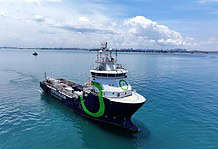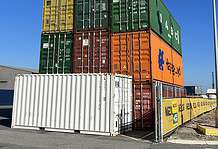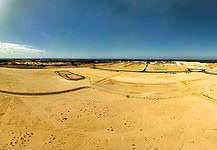AUSTRALIA’S resources and energy exports are expected to reach $299b in 2019–20, before easing back in subsequent years as some of the surprising price gains of recent quarters unwind.
However, the possibility remains for new records to be set if prices continue to surprise on the upside.
The recent Resources and Energy Quarterly, which published an extended five-year commodity outlook, indicated a bigger picture outlook showing vast potential and a host of new opportunities as development progresses over the longer term in Asia, Africa and South America.
It said Australia’s prospects as a resource and energy commodity exporter continue to remain strong, with the country tipped to become the world’s biggest producer of gold.
The forecast looked beyond immediate issues – such as trade tensions and the effects of COVID-19 – and considered some of the underlying, longer-term factors which affect commodity markets.
It said as the world continued to urbanise, industrialise, and improve its technology, commodities will continue to play a vital role.
In recent decades, China’s economy witnessed deep industrialisation and an injection of large quantities of iron, steel and coal.
The next wave of emerging economies – such as India – could feature relatively less manufacturing and more in services and information technology, while their energy and transport systems may also develop differently.
All these trends would add significant opportunities for commodities such as copper, lithium, nickel, LNG, and aluminium.
The report looked at the unexpected record prices for some commodities, like iron ore, which faced severe supply disruptions following the collapse of the tailings dam at the Brumadinho iron ore mine in Brazil in early 2019.
With reduced supply, iron ore prices surged above US$100/t in 2019, but were gradually correcting – until another wave of floods in Brazil and a cyclone in the Pilbara region of WA sent prices spiking again in early 2020.
This is leading to a second surge in iron ore export revenue, making it likely that in 2019–20, iron ore will be the first commodity to exceed $100b in export earnings over a single year.
However, to credit this earnings boom purely to ‘price growth’ would be to miss decades of careful work, investment, innovation and automation, all of which have driven significant improvements in productivity and scale, placing Australia at the heart of the global iron ore market.
Australia now accounts for more than half of all global iron ore exports.
This makes Australia crucial to the global economy itself, since steel is a vital input to energy, infrastructure, housing, construction, transportation and all forms of machinery.
In addition to its pivotal role across other industries, steel is among the world’s largest industries in its own right.
The report also highlighted the gas and oil industry, which has become more important to Australia over time, emerging as the world’s top exporter of LNG in late 2019.
Exports of coal, gas and uranium make Australia pivotal to global energy markets, while the country’s resources of lithium, copper, nickel and zinc are likely to hold it in good stead for the future.
The report anticipates that the outbreak of COVID-19 will have some effect on forecasts.
It is assumed that this event will have an impact on Chinese and global GDP in the first half of 2020, with the effects largely playing out by June 2020.
Resources, Water and Northern Australia Minister Keith Pitt said the report showed how resource and energy exports continue to support the Australian economy.
“The strength and diversity of Australia’s resource and energy commodities have allowed export earnings to overcome challenging world economic conditions — to the benefit of the Australian economy,” Mr Pitt said.
“We are seeing that exploration expenditure is solid and that there is room for further growth.
“The best thing that we as a Government can do is to remove any red and green tape that will stifle investment and ensure that our policy settings and actions for managing challenges like COVID-19 are right.”
Mr Pitt said the resources and energy sector is well positioned to lead a post-pandemic bounce back, thanks to the sound economic management of the Government.
“Even if you’re not directly involved in the resources industry, all Australians see the benefits of the public infrastructure like roads and hospitals that the sector’s royalties help fund,” he said.
“Australia remains well placed to take advantage of growing market opportunities going forward.
“Our exports of coal, gas and uranium are crucial to global energy markets and our success in extracting and exporting lithium, copper, nickel and zinc also make Australia important in supporting new technology, including electric vehicles and batteries,” Mr Pitt said.
Overview
In the first quarter of 2020, the COVID-19 outbreak has shifted some commodity prices – notably, oil and base metals (down) and gold (up).
These shifts are expected to unwind by the second half of 2020 assuming China’s economy returns to normal by then.
Iron ore prices have steadied at high levels, as supply problems offset demand worries.
Coal prices have steadied after the sharp declines of 2019, while bBase and precious metal prices have wavered (in opposite directions), on concerns about the COVID-19 outbreak.
Offsetting the impact of weaker prices, higher export volumes and a lower-than-expected Australian dollar are likely to see Australia’s resource and energy exports set the $299b record in 2019–20.
Earnings are expected to ease in subsequent years as price gains unwind.
Macroeconomic outlook
While US-China trade tensions and the coronavirus outbreak are weighing on world economic growth and industrial production at the start of 2020, growth is expected to rise slowly.
The IMF forecasts world GDP growth will slowly recover over the outlook period, due to improving performances in developing economies.
Stimulatory monetary policy is pushing global down bond yields and supporting consumer spending.
With global inflation low, monetary conditions are likely to be supportive of growth over the medium term.
The Phase One trade deal between the US and China offers some prospects for reducing trade tensions over time, though these tensions remain a notable risk to world GDP growth and commodity demand.
Uranium
Interestingly, the forecast said tight supply conditions — including the closure of Australia’s Ranger mine next year — could lift uranium prices, which have already begun moving upwards away from a floor of around US$25/lb placed underneath it following production cuts in Kazakhstan and Canada.
But while the prices may be on the rise, the report notes many mining projects have been abandoned or placed in hiatus in recent years, and uranium mines can take significant time to start or restart.
Lithium
The report expects prices to rise by 2025 to around US$10,400/t on the back of higher electric vehicle sales, with shortages of this mineral possible by 2023.
Global lithium consumption is projected to rise from 291,000t in 2019 to around 750,000t by 2025, while back home, there is expected to be a strong rise in spodumene ore output in 2022 and 2023.
Australia’s export earnings are projected to more than double by 2025 as world battery production increases and the lithium hydroxide demand leads to supply shortages.
Gold
The report said global mine production will rise 2pc this year to 3533/t, then another 1.9pc to 3600/t next year.
Australia is tipped to overtake China as the world’s largest gold-producing country in 2021 as miners respond to record prices.
Chinese output has been affected by the COVID-19 outbreak and increasing environmental regulation.
China
Indeed, the outlook for the world’s major commodity consumer, China, is perhaps a source of good news.
Deloitte reports that with new COVID cases appearing to have been successfully contained, China’s Government is moving to restart the economy.
The consultancy firm’s David Rumbens and James Campbell-Sloan
Stated the People’s Bank of China has lowered interest rates and cut the reserve requirement for banks to stimulate new lending, which is likely to flow into domestic infrastructure investment rather than new factories or equipment, given weak demand in export markets.
This bodes well for iron ore prices but less positive for trade exposed industrial metals.
Commodity outlook
Fears of reduced supplies of key commodities are growing due to measures to contain the virus at key mine operations across the globe, Deloitte said.
Several of the world’s biggest mining groups have announced delays to production and development projects because of travel and other restrictions imposed in response to the global pandemic.
“We’ve seen that dynamic play out in Peru recently where production has come to a halt after the government declared a state of emergency,” the analysts said.
“Bearing in mind that Peru produces 12pc of the world’s copper, removing supply on this scale is likely to have a price impact.”







































